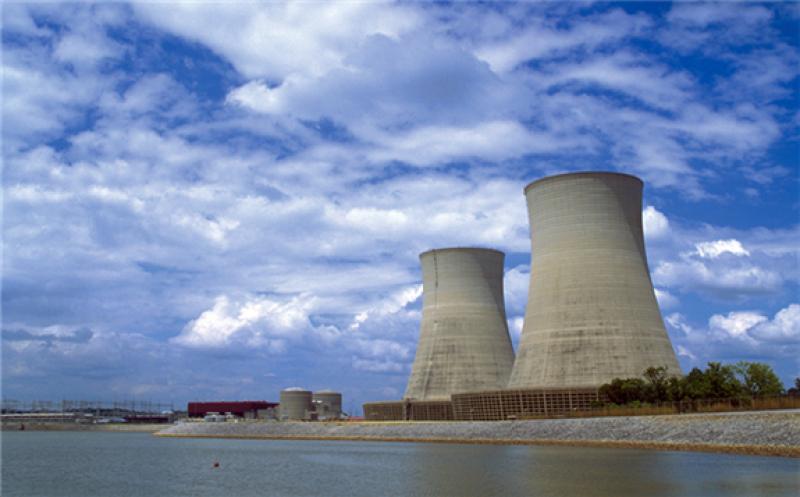In recent months, world governments have proposed small modular reactors as one means to ease their energy transition. The concept has existed for decades as a power source for vessels and district heating projects, and now the UK and the US have moved toward the technology.

Small modular reactors (SMRs) allow energy developers to build smaller nuclear plants than conventional construction would. Parts would be fabricated at factories and assembled on site, minimising costs.
Despite widespread interest, there are currently only four SMRs in construction; in Argentina, China, and Russia. Beyond this, the IAEA says approximately 50 SMR designs and concept exist worldwide.
The International Atomic Energy Agency (IAEA) defines SMRs as a reactor that produces 300MW per module. Some SMRs can work as a multi-module plant, meaning greater combined capacities.
An independent report to the Dutch government recently described SMRs as carrying “a promise for great simplification and related cost reduction while applying industrial manufacturing and construction technologies at factory rather than on site”.
Their small size and relatively easy construction mean they offer greater flexibility than conventional, long-term nuclear projects. With their smaller cost, SMRs present a ‘stopgap’ measure for countries looking to fill power shortfalls as older plants retire and new renewable plants come online.
A study by the University of Cambridge found that modularisation would reduce the cost of nuclear power by 25% in a best-case scenario. Similarly, standardisation and changes to construction would reduce cost by 16% each. Thereafter, production learning would further suppress costs by 17%.
Additionally, SMRs can help balance grids, moving at comparatively short notice as new power comes online. They can ensure power continuity in areas that rely on intermittent renewable power without significant storage capacity.
World governments begin investing in SMR technology
This week, UK Prime Minister Boris Johnson announced that the UK would invest up to $332m (£250m) in small modular nuclear reactors. The government policy document said this would “unlock up to £300 million private-sector match-funding”. Alongside this, the other $226m (£170m) of the new Advanced Nuclear fund would go toward the related technology in Advanced Modular Reactors (AMRs).
Robert Armour, chair global nuclear group at law firm Gowling WLG told Power Technology: “The UK’s existing coal generation is all but gone; gas generation plants are now largely mid-to late-life, and investors’ fear of stranded assets in carbon-emitting generation has inhibited investment. All but one of the UK’s nuclear stations are due to retire by 2030. The investment requirement is immense.”
“Smaller-scale, low-carbon nuclear power fits well in that decentralised world. SMRs offer the cost savings and quality benefits of modular, factory-based manufacturing and volume production. In the UK, they could be deployed in multiple unit configurations to replace existing nuclear and provide greater flexibility or individually to meet particular niche energy requirements or more localised demand.
“SMRs and AMRs come in many shapes and sizes, and offer the prospect of a low-carbon solution to a variety of niche power requirements. The mining industry often has significant power needs in remote locations with inadequate grid connections. Many island communities currently depend on diesel generation that is incompatible with a net-zero world. Energy-intensive users might prefer the cost certainty of a dedicated SMR to energy market risk.”
Progress towards global modular nuclear standards
The global economies of scale promised by these technologies would only happen with global cooperation. The IAEA issues global standards for such reactors and has said it will coordinate member states to develop key technologies. In particular, UK engineering companies have pushed toward SMR manufacturing.
Armour continued: “Nuclear power is highly regulated to ensure its safety. The approval process is lengthy, expensive and comprehensive: In the UK, reactor approval typically takes four years or more. This presents a significant burden for large reactor projects and a proportionately greater burden for SMRs. This could happen even if most designs negate the likelihood of off-site release of radiation.
“The Canadian Government has estimated the global market for SMR and AMRs at CAD$150-300bn [$115-230bn] per annum by 2040. The UK SMR Consortium, led by Rolls Royce, has indicated an SMR export potential of £250bn [$332bn] by 2050. Clearly, this market is worth pursuing. Furthermore, it is one where UK technology has a credible chance of being at the leading edge.
“For SMRs, which require multiple customers to support their production volume economics, a common approach to licensing and approval is particularly important. If every regulator requires modifications for their jurisdiction, the safety and cost benefits of replication and volume will be lost.
“A common regulatory approach to technical reviews can enable SMR deployment. This is why the cooperation announced in October 2020 between the UK’s Office for Nuclear Regulation and the Canadian Nuclear Safety Commission in Canada is timely and welcome. Both countries share the desire to develop a lead in AMR and SMR technology, as signalled in the Collaboration on Advanced Nuclear Technologies Action Plan signed in March 2020. Other regulators may join this cooperation and open international markets to SMR vendors.”
This article is reproduced at www.power-technology.com